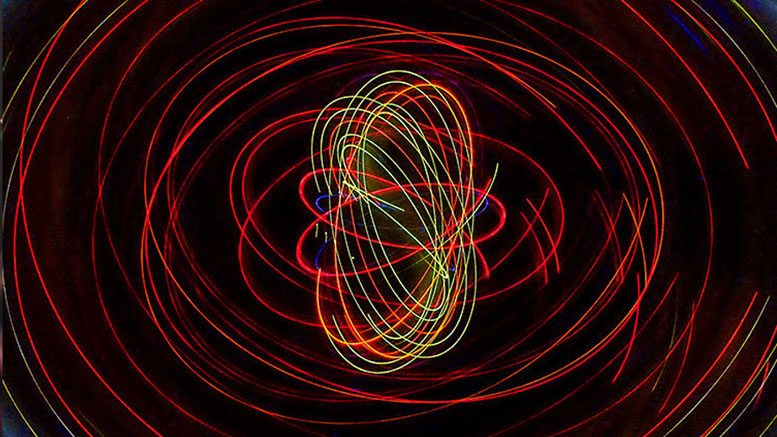
Researchers from the University of Cambridge have taken a peek into the secretive domain of quantum mechanics. In a theoretical paper published in the journal Physical Review A, they have shown that the way that particles interact with their environment can be used to track quantum particles when they’re not being observed, which had been thought to be impossible.
One of the fundamental ideas of quantum theory is that quantum objects can exist both as a wave and as a particle, and that they don’t exist as one or the other until they are measured. This is the premise that Erwin Schrödinger was illustrating with his famous thought experiment involving a dead-or-maybe-not-dead cat in a box.
“This premise, commonly referred to as the wave function, has been used more as a mathematical tool than a representation of actual quantum particles,” said David Arvidsson-Shukur, a Ph.D. student at Cambridge’s Cavendish Laboratory, and the paper’s first author. “That’s why we took on the challenge of creating a way to track the secret movements of quantum particles.”
Any particle will always interact with its environment, ‘tagging’ it along the way. Arvidsson-Shukur, working with his co-authors Professor Crispin Barnes from the Cavendish Laboratory and Axel Gottfries, a Ph.D. student from the Faculty of Economics, outlined a way for scientists to map these ‘tagging’ interactions without looking at them. The technique would be useful to scientists who make measurements at the end of an experiment but want to follow the movements of particles during the full experiment.
Some quantum scientists have suggested that information can be transmitted between two people – usually referred to as Alice and Bob – without any particles traveling between them. In a sense, Alice gets the message telepathically. This has been termed counterfactual communication because it goes against the accepted ‘fact’ that for information to be carried between sources, particles must move between them.
“To measure this phenomenon of counterfactual communication, we need a way to pin down where the particles between Alice and Bob are when we’re not looking,” said Arvidsson-Shukur. “Our ‘tagging’ method can do just that. Additionally, we can verify old predictions of quantum mechanics, for example that particles can exist in different locations at the same time.”
The founders of modern physics devised formulas to calculate the probabilities of different results from quantum experiments. However, they did not provide any explanations of what a quantum particle is doing when it’s not being observed. Earlier experiments have suggested that the particles might do non-classical things when not observed, like existing in two places at the same time. In their paper, the Cambridge researchers considered the fact that any particle traveling through space will interact with its surroundings. These interactions are what they call the ‘tagging’ of the particle. The interactions encode information in the particles that can then be decoded at the end of an experiment, when the particles are measured.
The researchers found that this information encoded in the particles is directly related to the wave function that Schrödinger postulated a century ago. Previously the wave function was thought of as an abstract computational tool to predict the outcomes of quantum experiments. “Our result suggests that the wave function is closely related to the actual state of particles,” said Arvidsson-Shukur. “So, we have been able to explore the ‘forbidden domain’ of quantum mechanics: pinning down the path of quantum particles when no one is observing them.”
Reference: “Evaluation of counterfactuality in counterfactual communication protocols” by D. R. M. Arvidsson-Shukur, A. N. O. Gottfries and C. H. W. Barnes, 18 December 2017, Physical Review A.
DOI: 10.1103/PhysRevA.96.062316
Never miss a breakthrough: Join the SciTechDaily newsletter.